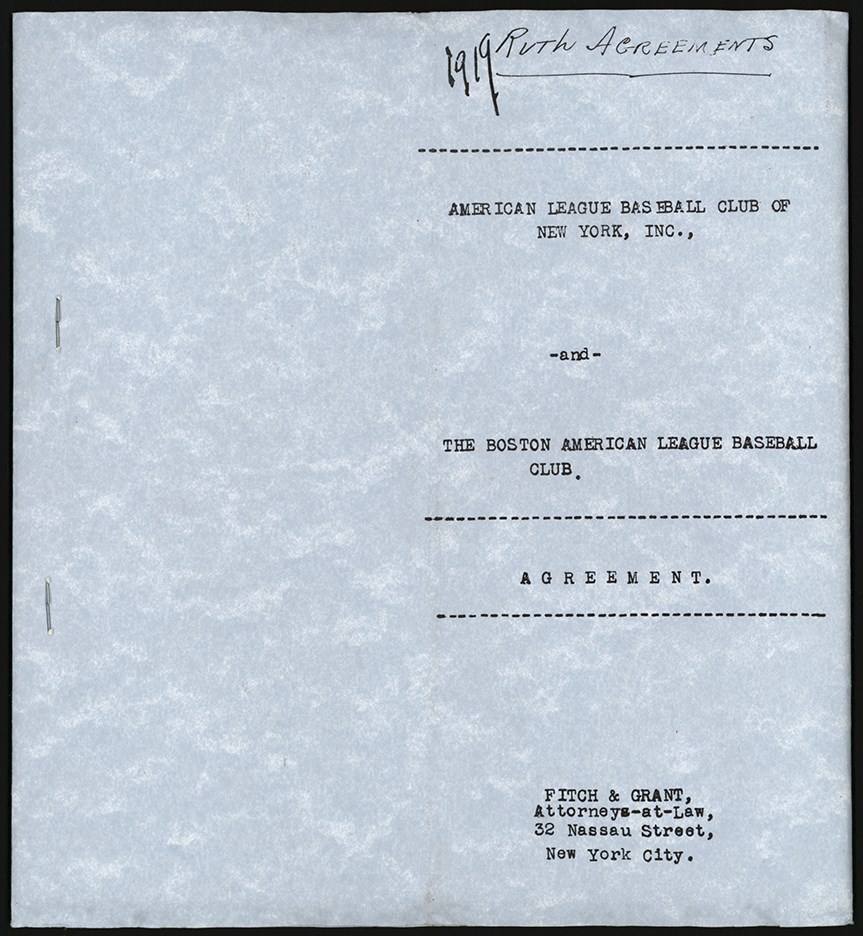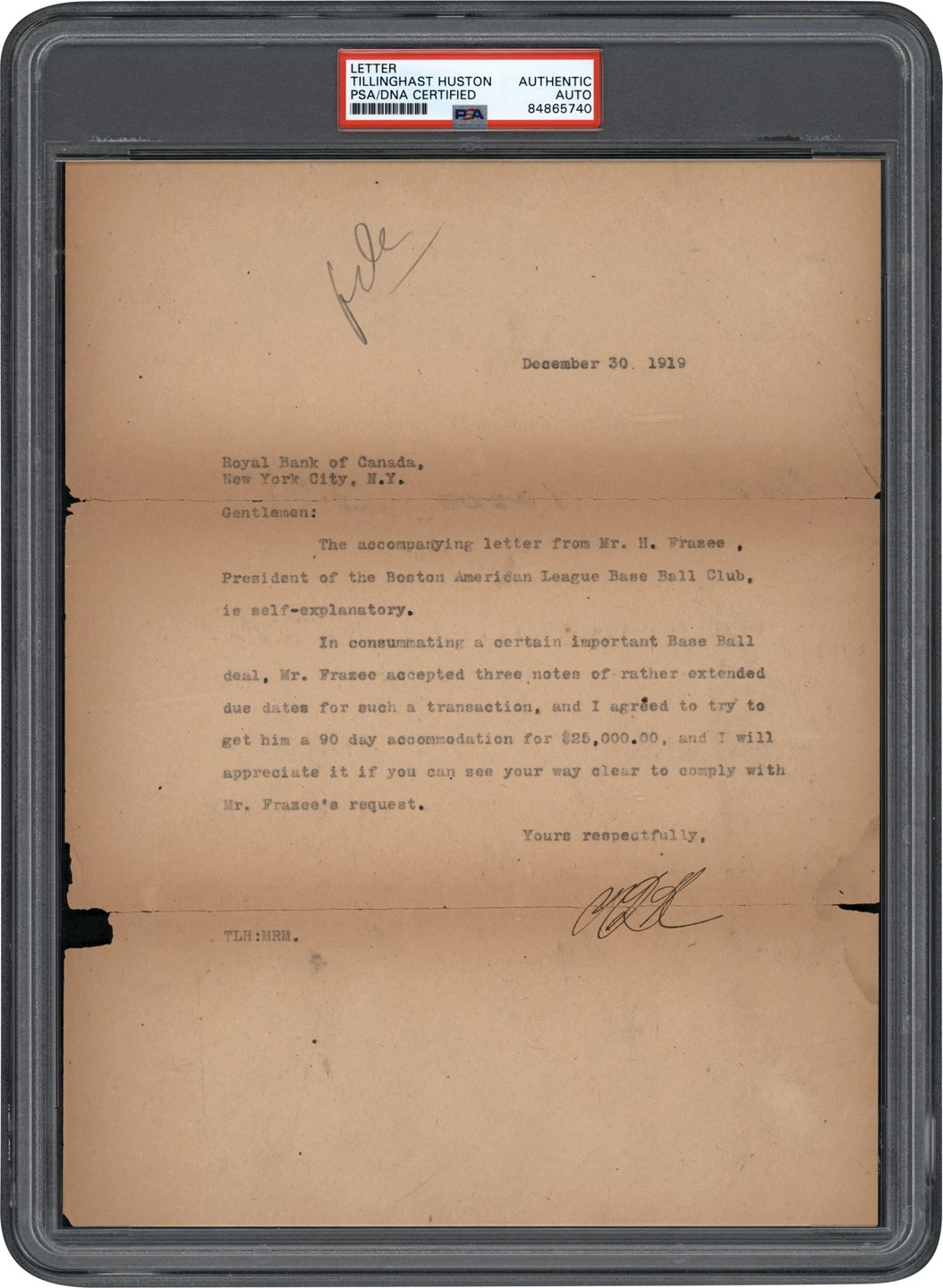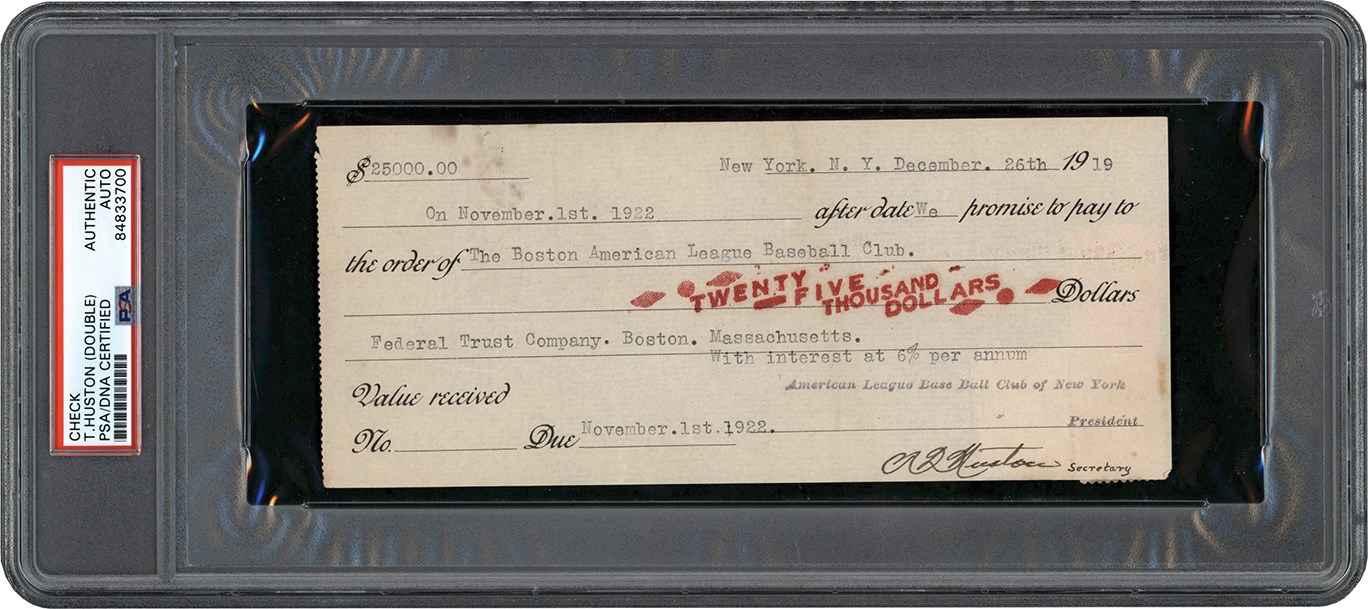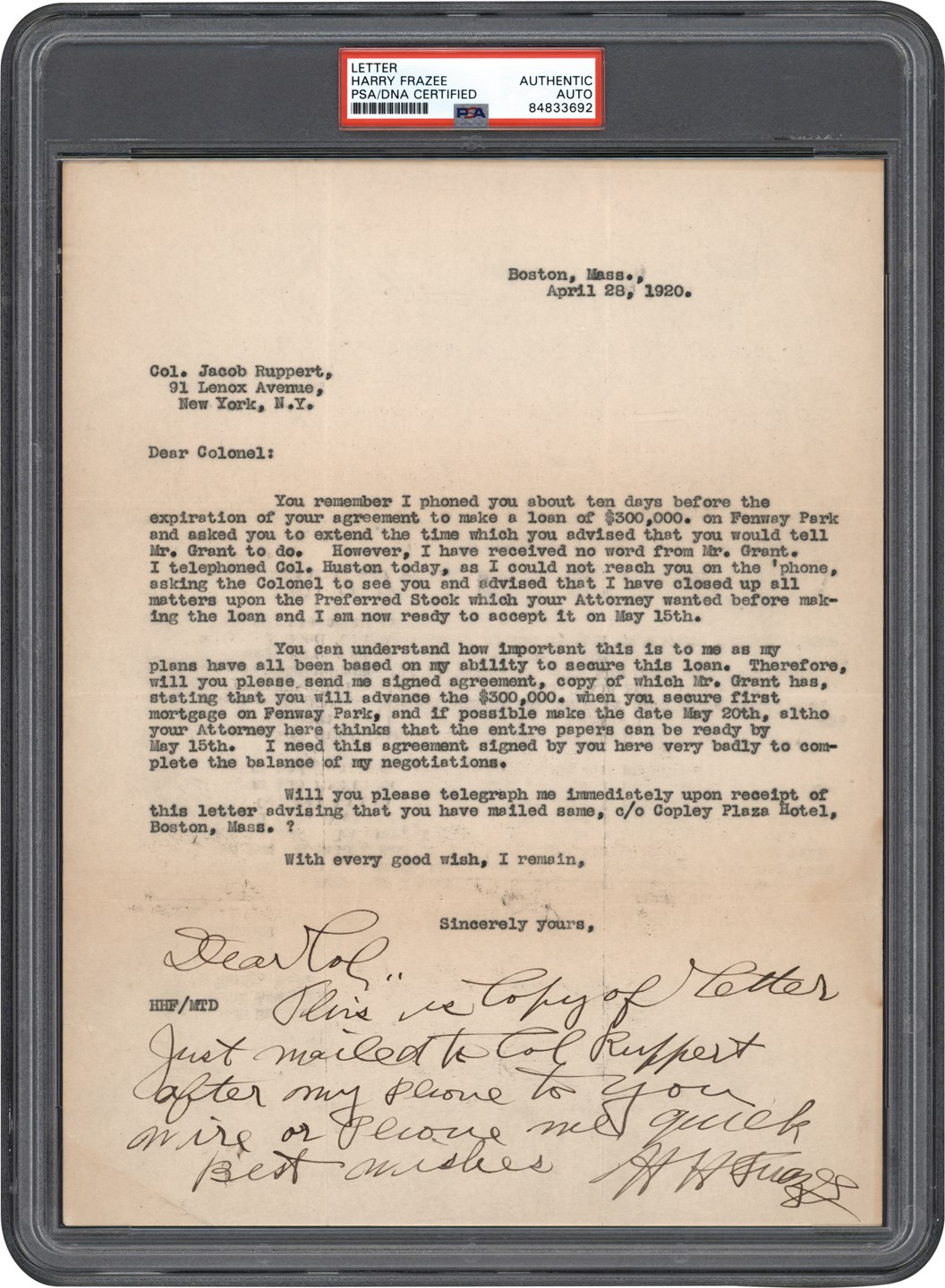Consign Your Best Items with Lelands. We Also Pay Cash on the Spot! Learn More Here.
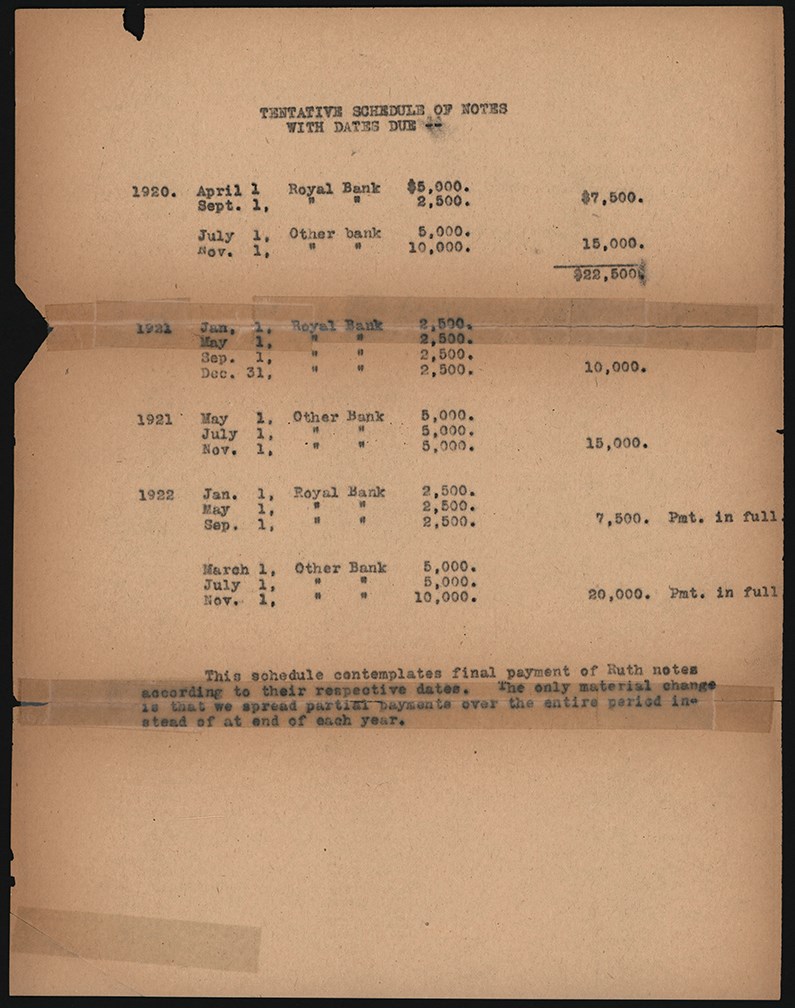
Tentative Payment Schedule of Notes for Babe Ruth (ex-Barry Halper Collection)
<p>One-page typed document, originating from the New York Yankees business files, directly relating to the purchase of Babe Ruth's contract from the Boston Red Sox on December 26, 1919. The document, which appears to have been compiled by Yankees co owner T. L. Huston, is titled "Tentative Schedule of Notes With Dates Due." Listed below is a three-year payment schedule, including the due dates, amounts due, and banks to receive the funds, with the total payment amounting to $75,000. The text along the base of the document reads "This schedule contemplates final payment of Ruth notes according to their respective dates. The only material change is that we spread partial payments over the entire period instead of at end of each year." The document (8.5x11"), which is toned, displays complete tears along both horizontal fold lines that have been repaired with vintage clear tape. A third application of vintage clear tape reinforces a crease in the lower left corner. A few edge tears/chips are also evident. </p><p>To fully understand this document, one has to know the details of the original transaction between the Yankees and Red Sox for the sale of Ruth's contract. <span style="font-size: 10pt;">The reason Red Sox owner Harry Frazee sold Babe Ruth's contract to the Yankees on December 26, 1920, was because he was in desperate need of cash. He owed $262,000 on an outstanding note to former Boston Red Sox owner Joseph Lanin, from whom he purchased the club, he needed to contribute $100,000 in cash equity for a theater he was purchasing, and his most recent theatrical productions were in the red. Even after the sale of Ruth's contract to the Yankees for $100,000 and a $300,000 loan on December 26, 1919, Frazee was still strapped for cash.</span></p><p><span style="font-size: 10pt;">One of Frazee's problems centered around still unsettled issues with his original Fenway Park mortgage. Until that matter was settled he could not avail himself of the Yankees $300,000 loan (Fenway Park was listed as collateral for the loan). </span><span style="font-size: 10pt;">Also, the $100,000 that Frazee received from the Yankees was not in one lump sum. Frazee agreed to take $25,000 in cash, with the remainder to be paid in three notes of $25,000, each coming due, respectively, on November 1st over the next three years. The initial $25,000 that he received in cash, was not nearly sufficient to cover his debts. Faced with this mounting financial pressure, Frazee immediately began borrowing money, using the three Yankees notes as collateral for his loans. </span></p><p><span style="font-size: 10pt;">As we see here, Frazee had all three notes discounted so that he could receive immediate cash. With various banks now holding the notes issued by the Yankees, the Yankees negotiated a payment plan with the banks that allowed them to honor the notes over time, instead of paying the full $25,000 due at the end of the year. This document reflects that "tentative" payment plan. </span></p><p><span style="font-size: 10pt;">This document, along with nearly every other surviving document relating to the sale of Babe Ruth to the New York Yankees, originates from the estate of Ed Barrow, who was manager of the Boston Red Sox at the time of the transaction, and soon after became the longtime business manager/general manager of the New York Yankees. Many years after Barrow's death, legendary collector Barry Halper purchased his entire business archive from the Barrow family, which included dozens of documents relating to Boston's historic sale of Ruth. (Barry Halper's collection is considered by many to have been the finest private baseball-memorabilia collection ever assembled.) In 1999, Halper sold nearly his entire collection at auction through Sotheby's in New York (the collection was so vast that it took over a week of twice-daily live auctions and three months of weekly internet sales to liquidate it). Lot 560 in the live-auction portion of the sale featured a large collection of documents relating to the sale of Ruth, from which this document, as well as every other "sale of Ruth" document featured in this auction, originates. The entire content of Lot 560 in the 1999 Sotheby's Halper Collection auction has been consigned to this auction by the original purchaser, making this just the third time since 1919 that these historically significant documents will have traded hands. The offered document remains housed in it's original sleeve from the time it was sold at Sotheby's in 1999.<br></span></p>
Past Sports Card, Memorabilia, Non-Sports Card and Collecitble Auction Items
Other past auction items that may be of interest to you.


